Amsterdam’s De Wallen red-light district has long been one of the city’s most provocative neighborhoods thanks to its notorious window brothels.
But the historic area has become something of a spectacle in recent years thanks to a dramatic rise in tourists to the Dutch capital.
According to Femke Halsema, Amsterdam’s first female mayor, sex workers have “become no more than an attraction,” as a result of the “disruptive behavior” and “disrespectful attitude” of some tourists, along with the rise of camera phones and social media.
As a result, the area is undergoing a major overhaul in a bid to protect sex workers from degrading conditions and reduce the impact of mass tourism.
Sightseeing tours of the red-light district are coming to a close and there’s even talk of moving the window brothels to a neighborhood outside of the city center.
The municipality of Amsterdam, one of many destinations currently tackling the issue of overtourism, has also teamed up with local residents to launch a campaign targeted at the millions of visitors who turn up each year.
“We Live Here” is part of Amsterdam’s “Enjoy and Respect” campaign, which aims to combat unruly behavior such as urinating in the streets or canals, littering, drunkenness and loud noise.
But what’s it actually like to live in a neighborhood synonymous with sex shops and drunken tourists?
Here, six red-light district residents tell CNN Travel how they cope with the excessive noise, huge crowds and unruly behavior.
‘We learned karate to defend ourselves’
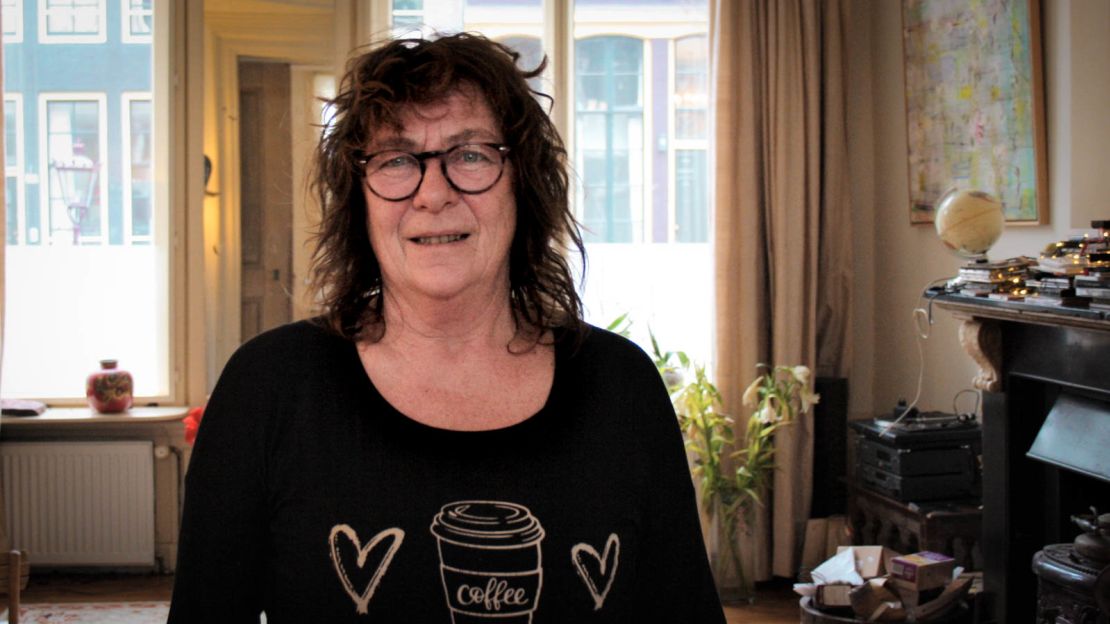
Martine Groen, 70, has lived in a canal house on Oudezijds Achterburgwal for many years.
I’ve lived in the red-light district since 1979 and started off in a small canal house. When my second child was born it [the house] became too small and we had to move.
Me and five others bought a big building, which was originally built in 1450, on the canal Oudezijds Achterburgwal.
It was a dump, but we cleaned it up together. In those days the neighborhood was extremely unsafe, with a lot of heroin junkies and dealers around.
So we, including the children, all went to learn karate to defend ourselves. Today, only me and the neighbor above me are left from that original group.
Now we experience a lot of nuisance from loud tourists. It started around six years ago.
‘I avoid the neighborhood at night’
I think they should just put the red-light district right on Schiphol Airport. They can put the girls over there. It’s the only thing those tourists come here for anyway.
I really hate drunken Englishmen. It’s like King’s Day, a holiday we celebrate in the Netherlands each April, is happening every night.
You can’t walk the streets in a normal manner because of the crowds. I avoid the neighborhood at night. It’s not fun anymore.
Why don’t I move? Because I love it. Why should I leave? I love my house, and it’s close to everything. It’s a small area, so I can get out quickly and escape from the crowds.
In the old days, junkies were walking around. It was unsafe, but we were together. We looked out for each other and kept our eyes on the streets. Now we all experience the same nuisances and we can’t do anything about it.
I am very pleased with the ban on tours. But we are not heard by the municipality. Besides, what can they do? You can’t do much against mass tourism.
Well, I guess they could make a red-light district amusement park. Everybody feels it has to change, but nobody knows how.
‘More police would help.’
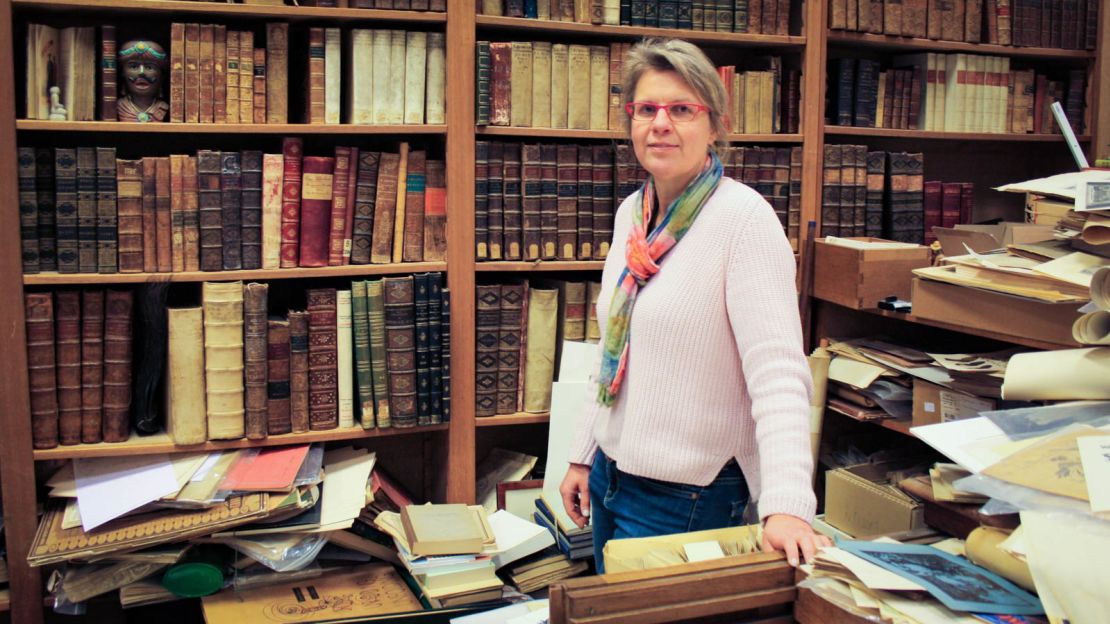
Sascha Kok, 49, moved to the area as an adult after visiting regularly in her younger years and is now raising her son in the neighborhood.
I grew up outside of the city, but came here often as a child, as our family business, antiquarian bookshop Antiquariaat A. Kok & Zn. B.V, is based in the area.
When I was younger, I couldn’t walk to Nieuwmarkt Square [located next to the red-light district]. Now my 6-year-old son can play on the streets, and there’s less drug-related nuisances.
The neighborhood has changed for the better, but the number of visitors has increased. The tourists tend to concentrate in a very small area. The larger groups are the worst – they don’t care that people live here.
More police would help. But the Amsterdam police department is struggling with major staff shortages.
Changing the licensing policies for stores could also help to change the face of the red-light district.
‘My son will see it all’
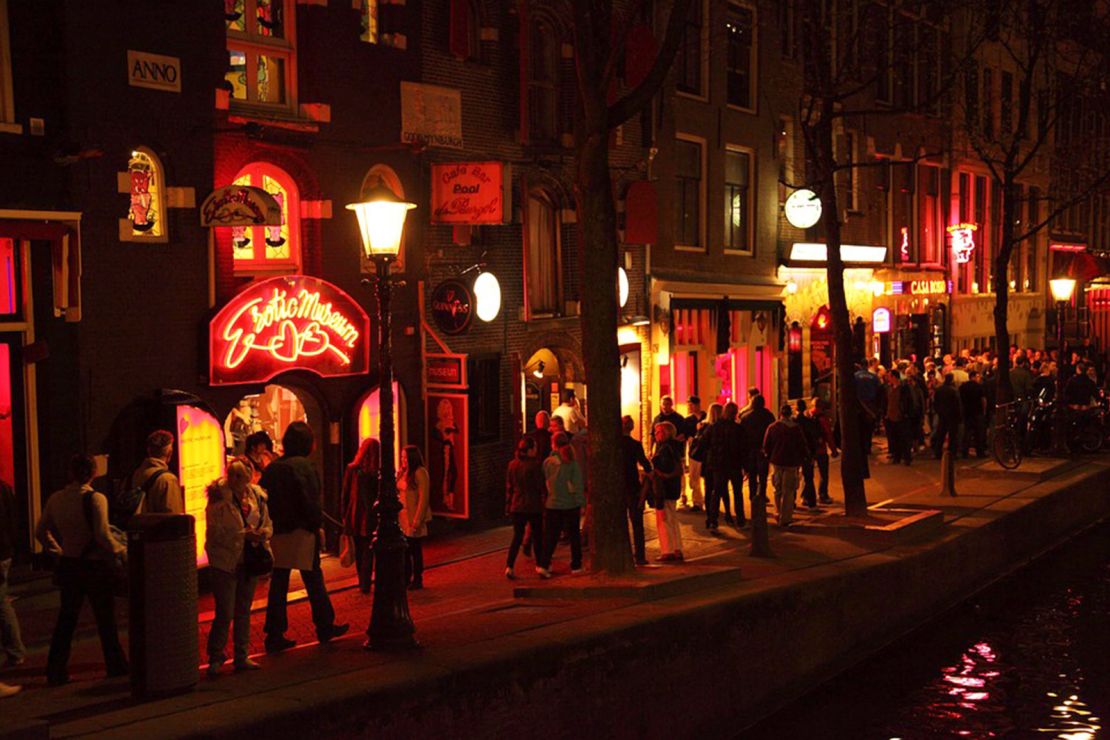
At the moment there are mostly shops selling waffles and marijuana seeds and tourist supermarkets with flashy lights. Closing some of the coffee shops did help a little though.
Closing the windows [there are around 330 window brothels in De Wallen] wouldn’t make a difference. It would only move the activities to another area. I don’t mind them [the sex workers] being here. It helps to regulate prostitution.
Until recently my son never paid any attention to the women. But the other day he asked why they have almost no clothes on.
I explained to him this is a way they can make some money. Children are very flexible. By growing up here, he’ll see it all at a young age, so he’ll be less curious about the unknown when he gets older.
For example, I was never attracted to drugs because I was visiting the neighborhood regularly when I was young. I saw the heroin junkies, I saw what drugs can do to you.
‘It’s like a small village’

Long-term residents Willemijn Tybout, 41, and Justus Dolleman, 52, say there’s a strong solidarity between locals.
Justus: It has always been busy here and I love it. I like the buzz of the streets. I moved to the red-light district as a student in 1988, when I was 18. At that time, people were using drugs openly and there were a lot of dealers walking around. I never felt unsafe though.
I knew the places to avoid and hours to avoid. Nowadays there are more tourists and some make a mess. Luckily the mayor hung up signs to ask the tourists to behave.
Willemijn: It’s a clear signal. Tourists used to think anything goes here. I think the ‘We Live Here’ campaign is also great. It shows that there are local people here too. Tourists are more than welcome, but they have to behave. I know there are plans to close all windows in this area.
The women aren’t making a lot of money now anyway. People only come here to watch them and don’t actually pay to visit them.
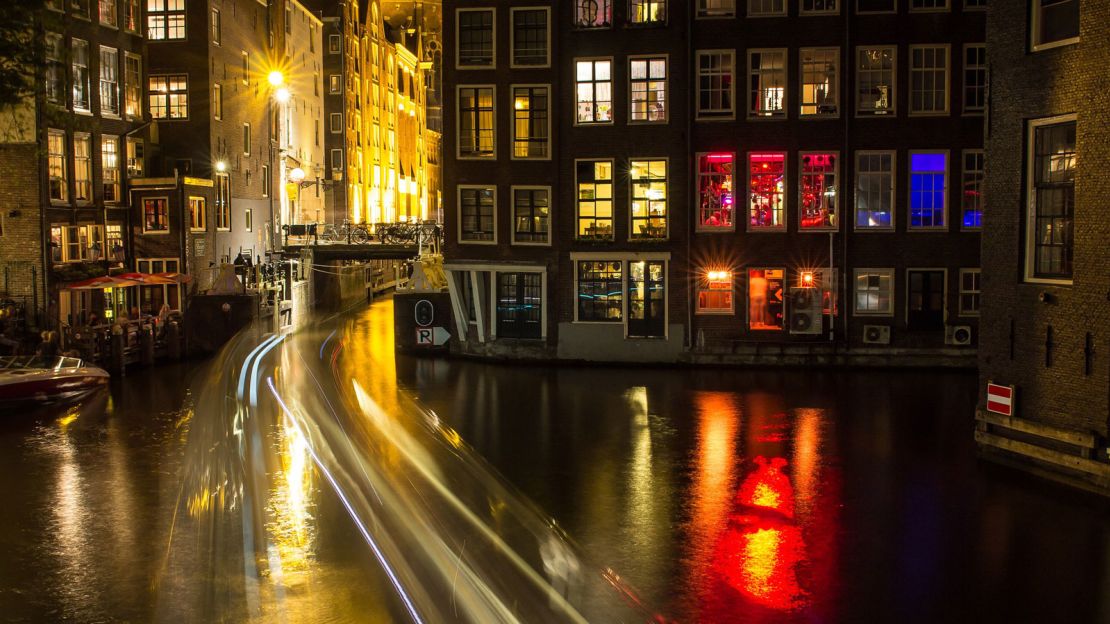
We call it ‘aapjes kijken’: watching monkeys. It became too busy for the men who did use to visit the sex workers, so what’s the point of in the women being here?
Justus: I tried to live in other parts of Amsterdam for about two years, but it was so boring. I came back here as soon as possible. I don’t experience any inconvenience. My bike never gets stolen and I’m in bed when there are dealers hanging around selling drugs.
Willemijn: I experience more inconvenience from the hectic life outside than Justus. My youngest daughter, who’s seven, likes to ride her bike to swimming classes. Before we even arrive, I’ve had three heart attacks because of people not paying attention to the traffic.
I get very annoyed by the hordes of tourists. I also hate that locals sometimes deliberately cause collisions with their bikes, just to scare them [tourists]. Sometimes I look for other houses, but it’s all so expensive and small. It’s then that I really appreciate what we have here.
Justus: We interact with the neighbors a lot. We have dinners together and see each other almost daily at school and the playground. It’s like living in a small village with a high level of solidarity. In the end, everyone stays here, whether they’re complaining or not.
‘There’s something about this place’

Paul van Egmond, 51, relocated to the red-light district 15 years ago and has never looked back.
I used to live in Haarlem [a city located close to Amsterdam] which I found somewhat boring. When I had the chance to buy an apartment in Oudezijds Achterburgwal, in the center of the red-light district, I didn’t hesitate. I didn’t even think about the maintenance involved in owning a very old house.
I moved here 15 years ago, and my daughter was born seven years ago. She knows all the girls [sex workers] who work here and sees them as friends. If you don’t make an issue out of it, it will not be an issue for children.
I know all of my neighbors, along with the prostitutes and window operators, and the owners of the old pubs and the sex stores. They are all friendly people. I especially like the dynamics of the early morning, when everybody is busy starting their day and the streets are deserted.
There’s something about this place, I can’t really explain. It’s so beautiful, especially when the sun is out. It has a lot of hidden places and it attracts both dark and light. I don’t experience any inconvenience.
‘It’s dangerously busy in some spots’
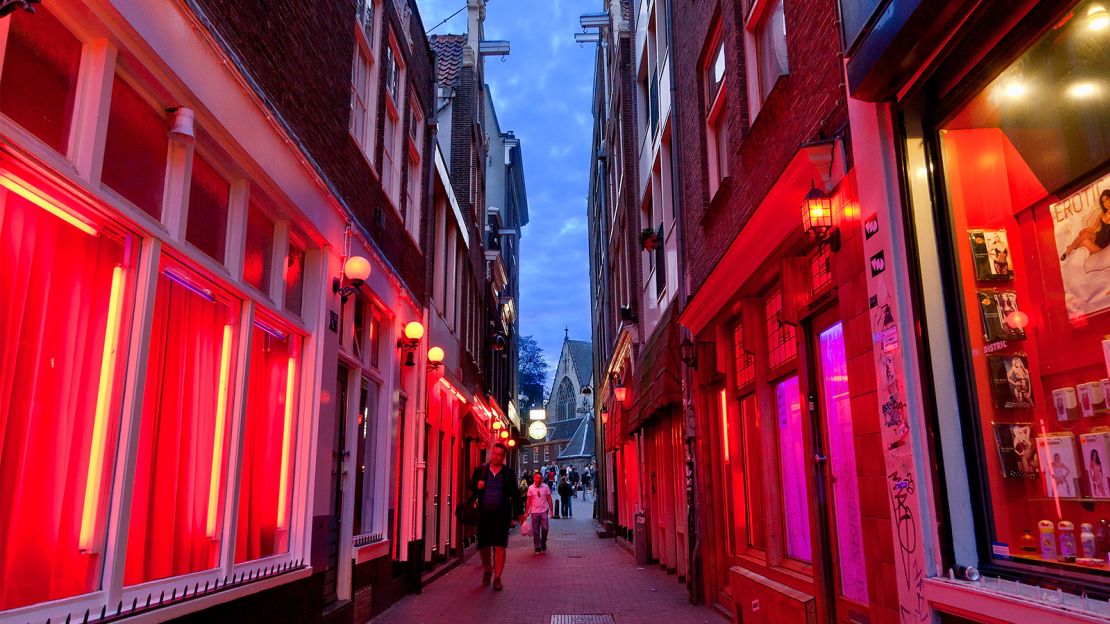
In my opinion, there are no problems in the red-light district. Not like some of the others are saying. Of course it’s busy here, it always has been.
I can only speak for myself, but I think the major issue is not the numbers, but the behavior of some of the tourists.
But on Friday and Saturday evenings, it’s dangerously busy in some spots. If there’s a fire, the fire brigade can’t get through. I think they need to close the area at that point.
I regularly email the municipality with advice, but I never got any response. It seems like they don’t care. I think if you inform visitors [about rules and codes of conduct] while they’re on the airplane, or via a text message as soon as they arrive in the city, they would be more aware.
They would know that it’s forbidden to photograph sex workers and they’re not allowed to drink alcohol on the streets. Inform them about the fines, which I think the authorities need to raise.
We also need more enforcement on the streets. If we had hosts – not police – walking around, it would work more effectively.
‘The campaign has had no effect’

Rachel Bonnewell, 41, owns and runs boutique hotel Misc eatdrinksleep and De Wallen craft cocktail bar Rosalia’s Menagerie with her husband.
I have never lived in a neighborhood or street in Amsterdam where I know so many of my neighbors.
The locals mostly focus on each other and are very mindful when it comes to keeping the street a livable space. The tourists just form part of the backdrop of our daily life.
People do try to get away when the really busy weeks are happening, like King’s Day and New Year’s. It just gets too busy and dirty.
From my experience, the ‘We Live Here’ campaign has had no effect. As well as the large signs claiming 100 euro fines for drinking in the streets or littering. They just make the area look less beautiful.
There are no police on the street enforcing the warnings and most of the signs are in Dutch. It’s completely useless.
Moreover they were installed mid-April when the Aprilfeesten (a local run outdoor festival) on Nieuwmarkt Square starts and King’s Day is around the corner.
During those festivities everyone is generally drinking and eating on the streets and making a mess. Why would a tourist behave any differently?
Most of the time I like living here. Previously some tourists have been scammed into thinking our home was an Airbnb property.
The picture of our place looked either like a New York loft or a Swiss chalet. The first time it happened, it was in the late evening and a family with three kids rang the bell.
We were all a bit in shock and we felt so bad for them. We ended up calling around and found them a place to stay for the weekend.
But now, if it happens, we just answer the door with: ‘No, sorry. No Airbnb here.’
Katja Brokke is a freelance journalist and editor from Amsterdam specializing in food, travel and media. Follow her on Twitter at @KatjaBrokke









